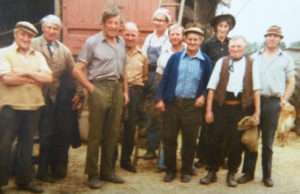I applied today for a job at a school where it would be a dream to teach.
To be applying for jobs at sixty-two years of age is a challenge. In my previous post, I was on a one year contract that was not renewed as falling rolls meant the number of teachers was reduced. In my present post, I am covering a maternity leave, which concludes in May. Finding a new post is essential to being able to pay the bills.
The post is that of ‘Special Education Teacher,’ it is to provide support for students with diverse special educational needs. The advertisement says that familiarity with the processes for obtaining concessions for students from the Department of Education would be an advantage, which would put me at a disadvantage.
Clicking ‘send,’ I wondered what pitch for the post I might make in the unlikely event of being called for interview.
Looking back forty years, I recall working in a special school where the boys were labelled as ‘educationally sub-normal’. I was never sure what ESN meant, there seemed a lot of people in history who would have had such a label applied to them if they had been living in the 1980s. Most of the boys were indistinguishable from other boys you would have met on the streets of any town. What was the rationale for sending them to a boarding school, albeit a school in a very pleasant corner of Surrey?
My role at the school was that of a houseparent. It was a role that I enjoyed. Sitting at the meal tables, sitting watching television, standing in the playing field, I enjoyed the company of the random assortment of characters for whom I cared. It was work that taught me that there were intelligences that could not be measured by any testing.
Forty years later, the tests are still inadequate to the task of assessing the full potential of students. The least academically able among the students whom I now teach are often those who will offer perspectives that diverge from the norm, they are the students who will respond to existential questions with an unexpected profundity.
If there was a single concept that caught my attention during teacher training four years ago, it was that of ‘oracy,’ or ‘oral literacy.’ Most teenagers now have a level of oracy that far outstrips their written literacy. Teaching has become as much about conversation as writing.
‘Mr Poulton, how would you address the challenges of special education for students?’
‘I would talk to them.’
It is not an answer that would get me a job.


